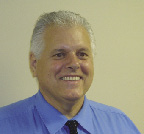In light of the current economic predicament, Environmental Due Diligence has never been more in the forefront when lending decisions are made. One example is the SBA's Section 504 Loan Program.
As defined in the SBA's Standard Operational Procedures Manual SOP 50 10 5(A), "the 504 Loan Program is an economic development program designed to finance fixed assets for small businesses on reasonable terms and to stimulate employment through a job retention/creation goal." In order to meet these goals an environmental investigation is required of all commercial property upon which a security interest such as a mortgage, deed of trust, or leasehold deed of trust is offered as security for a loan or debenture. These loans are issued through a partnership with Certified Development Companies (CDCs) and private, third party lenders. CDCs are non-profit corporations certified and regulated by the SBA to package, process, close, and service 504 loans.
The types of investigations required are very broad, and are based in part on the amount of the loan and the NAICS code(s) for the property's current and prior uses.
At a minimum, even though an investigation of commercial property may begin and end with an environmental questionnaire, risk assessment or transaction screen, which concludes no further investigation warranted, in general, the SBA will still require compliance with all of an environmental professional's recommendations (including "housekeeping measures," such as secondary containment, decommissioning monitoring wells, sealing floor drains, etc.).
In Connecticut, if a property or business is transferred as an "establishment" as defined under state law, the environmental condition of the property must be fully characterized and verified by a Licensed Environmental Professional or approved by the CTDEP.
The site characterization automatically includes a Phase I, Phase II and Phase III Environmental Site Assessment with a Conceptual Site Model (CSM) of the release areas.
Although the state allows two years to complete the site characterization of a transferred establishment, typically, the environmental professional is under pressure to complete the entire investigation of the subsurface site conditions within a period of several months or less, to facilitate the loan closing process and, in the event of a release of hazardous substances, demonstrate that an understanding of the extent and magnitude of the contamination is fully characterized and known.
Having said this, although SBA loans may not necessarily be approved or disbursed if there is known contamination or on-going remediation at a property, the environmental professional can usually determine if the risks have been minimized, and provide an opinion of costs and estimated timeline necessary to verify that the site is in compliance with the Remediation Standards Regulations, or RSRs.
If the CDC seeks to continue loan approval or disbursement despite contamination or on-going remediation at the property, the environmental professional's investigative activities should provide the appropriate supporting documentation which the CDC must submit to the SBA with their approval request.
At this point a comprehensive and advanced understanding of the SBA SOP requirements is essential by the environmental professional in order to allow for a smooth navigation through the SBA's detailed review process of the environmental documentation, or "screen-out" as it is referred to by the SBA loan processing centers.
The use of an environmental professional well versed in this "screen-out" process will help to ease what can otherwise be a difficult, frustrating, or time consuming procedure by providing early and critical decision-making data to all parties involved.
In closing, environmental professionals involved in SBA loans can expect on going amendments to these SOP's every six months. Therefore in order to aid those who seek to develop commercial properties financially backed by the 504 program, one should utilize an environmental professional current in the environmental policies and procedures of the 504 Loan Process.
Michael Granata and Tina Ostrowski are principals at GO Environmental, Milford, Conn.
Tags:










